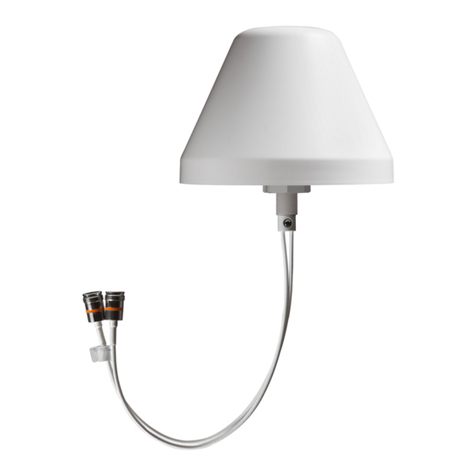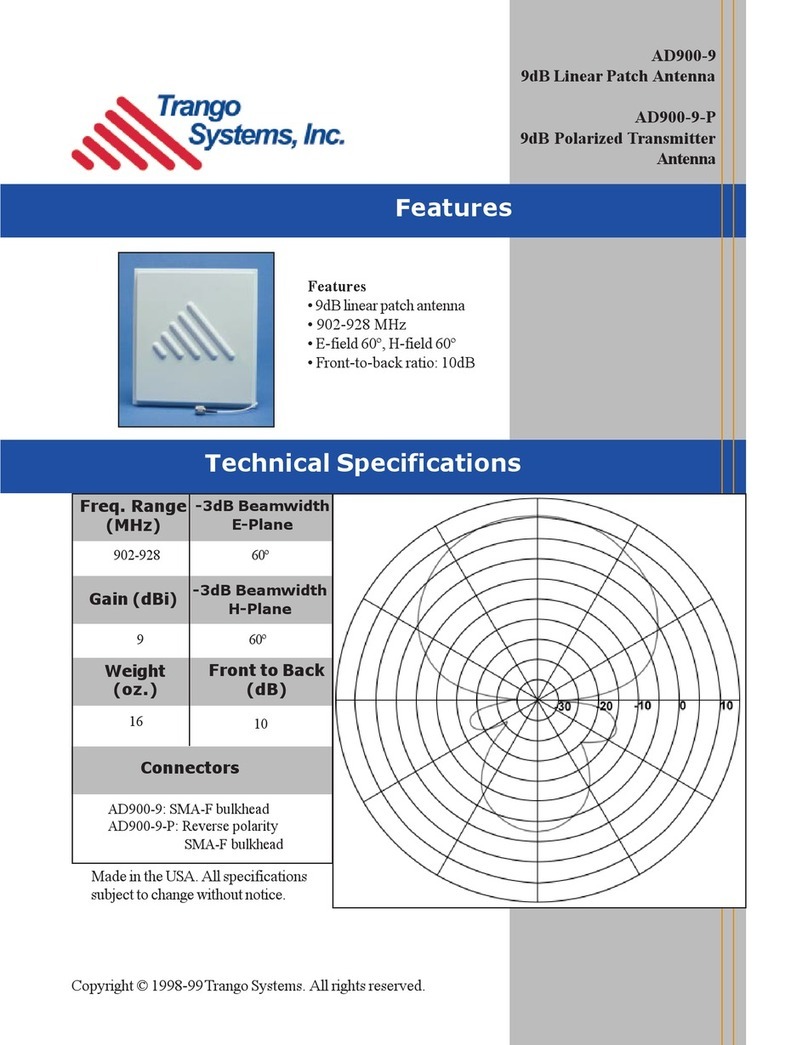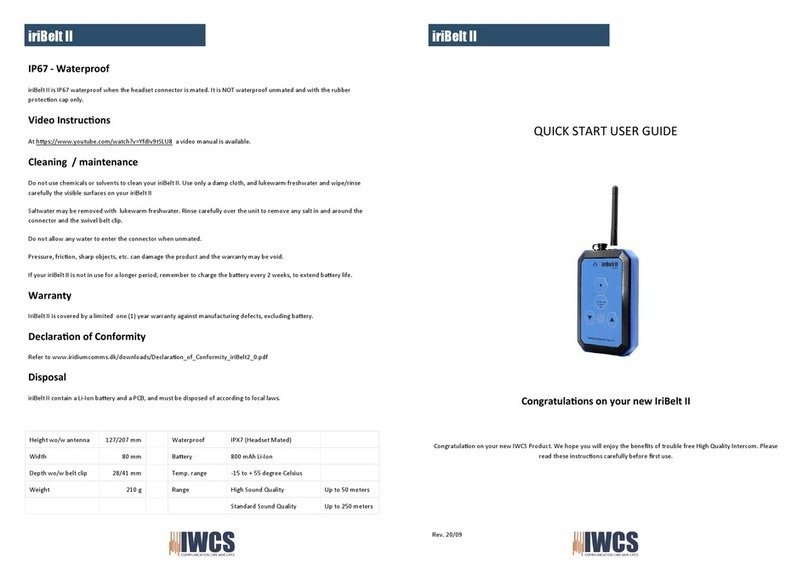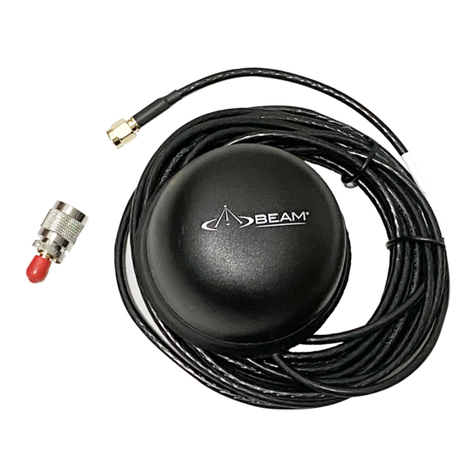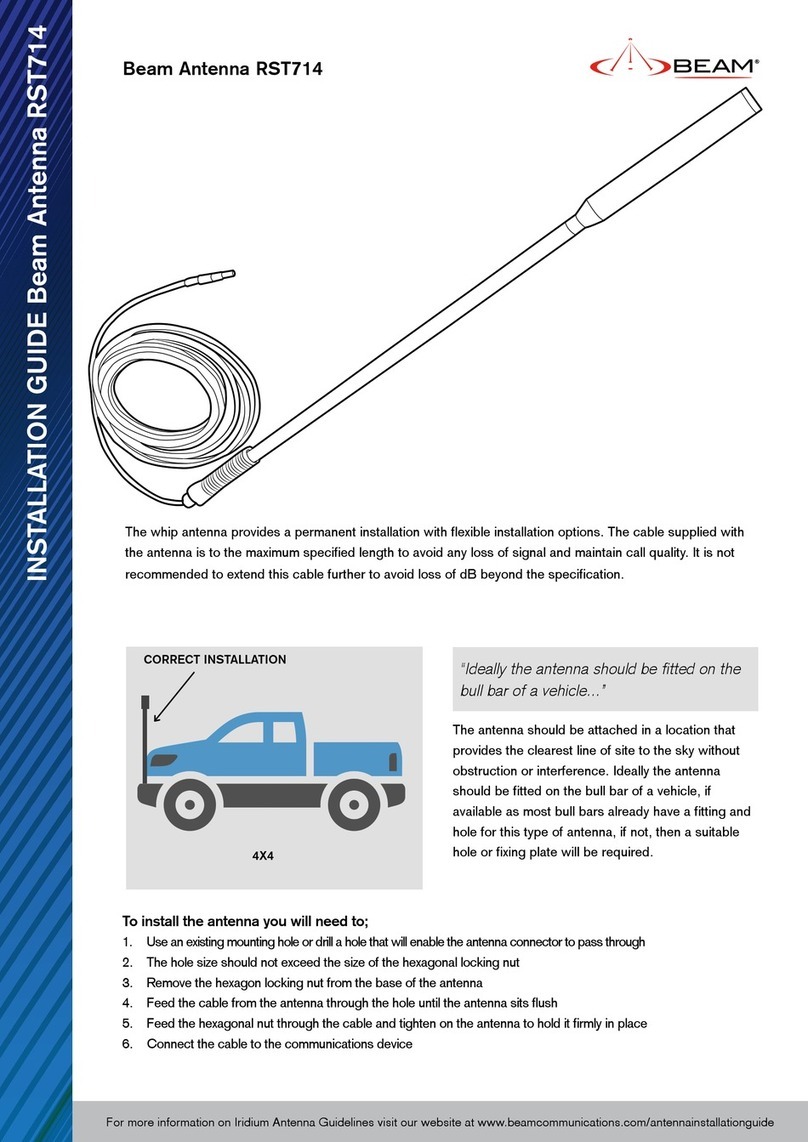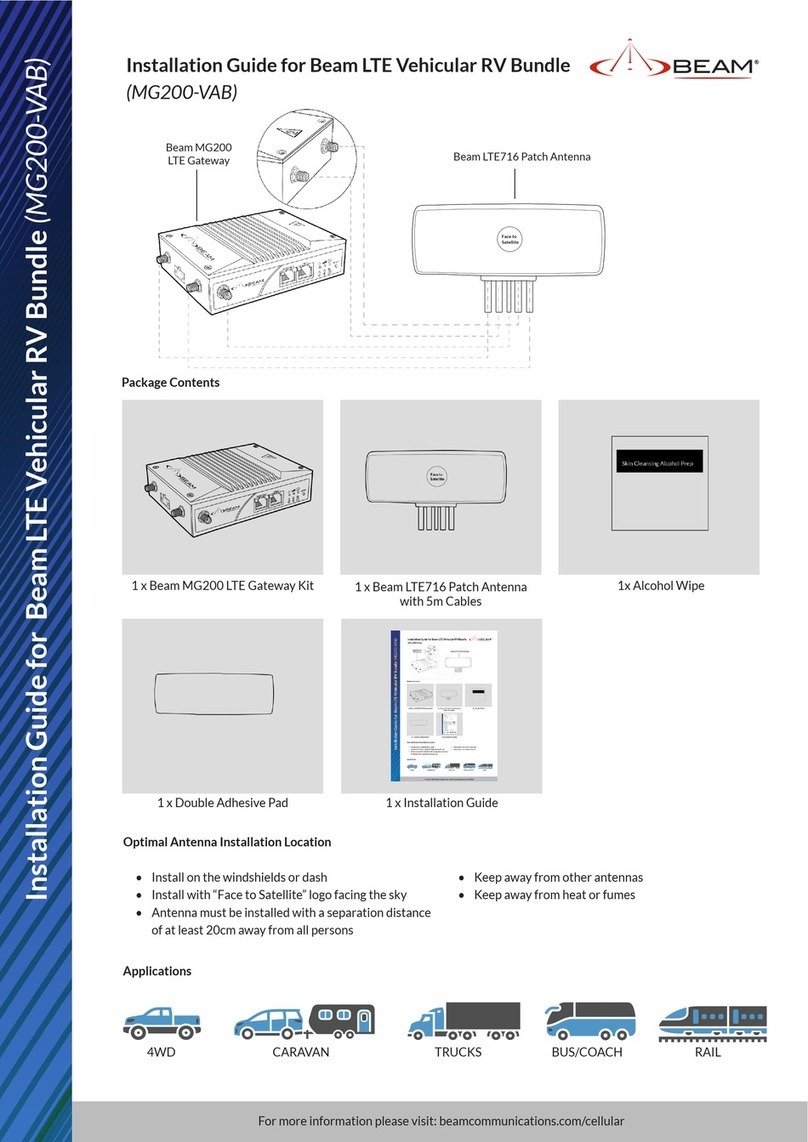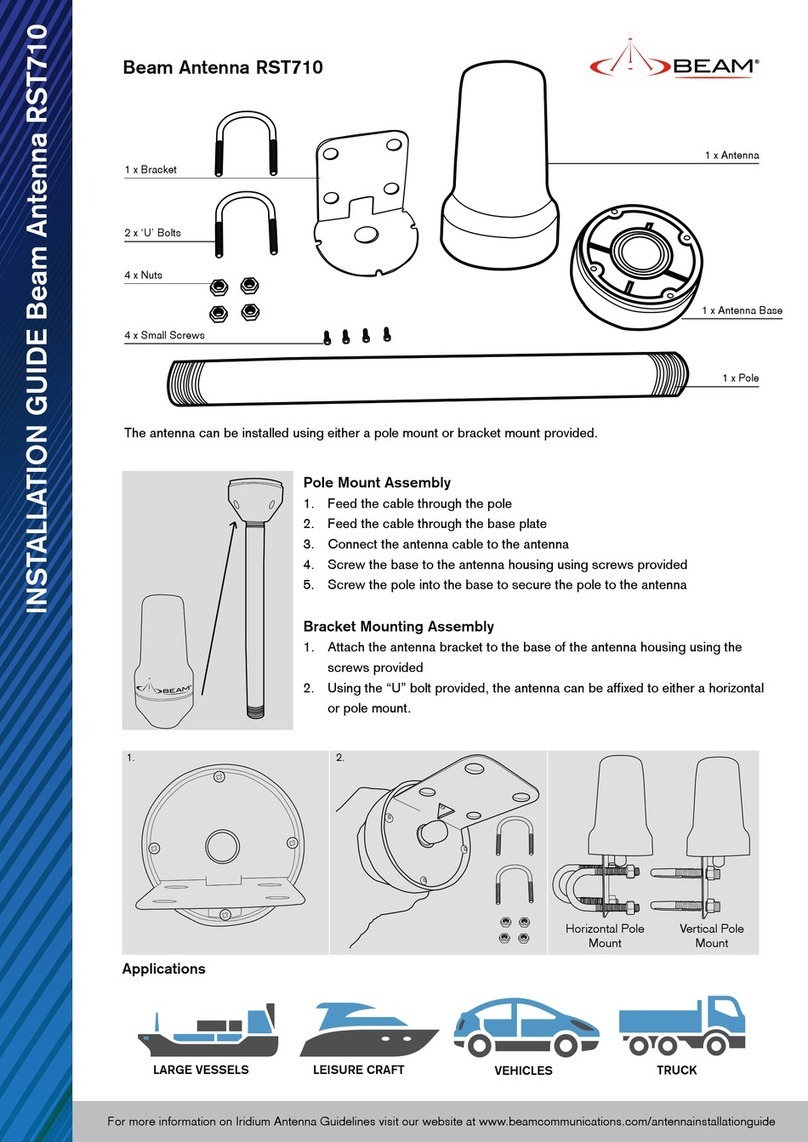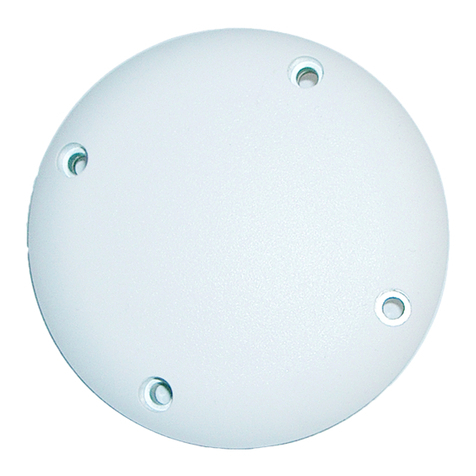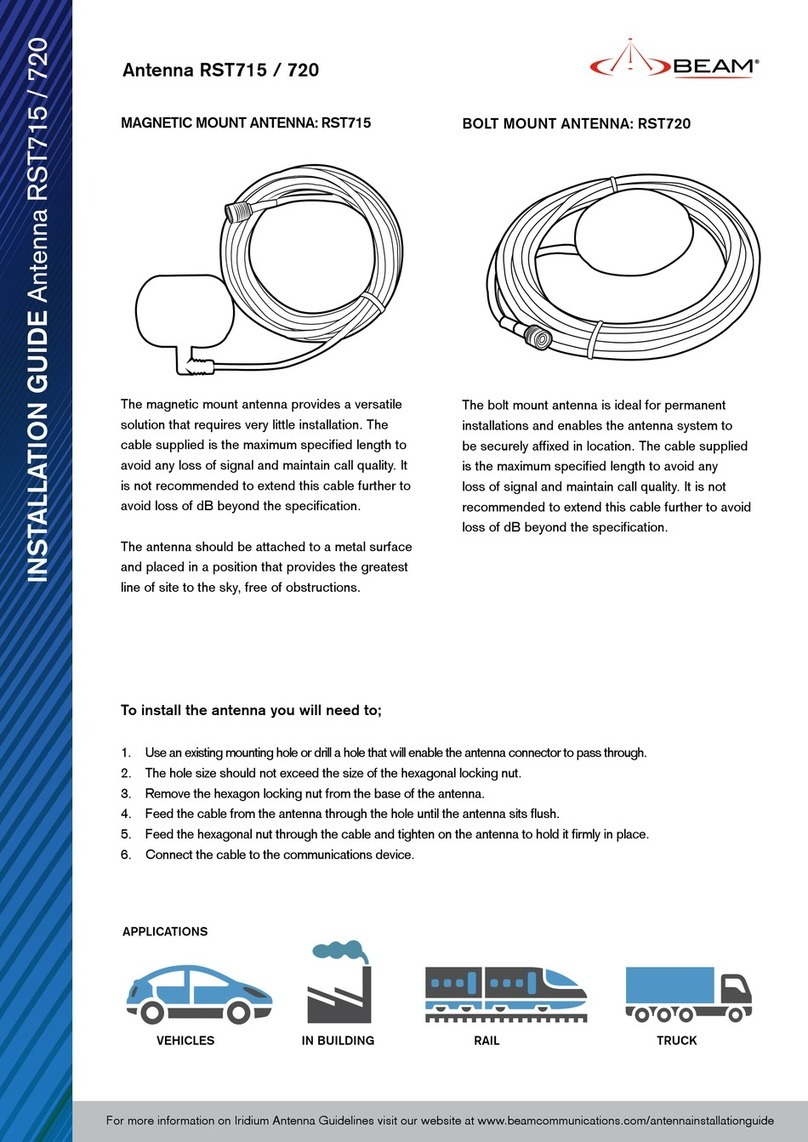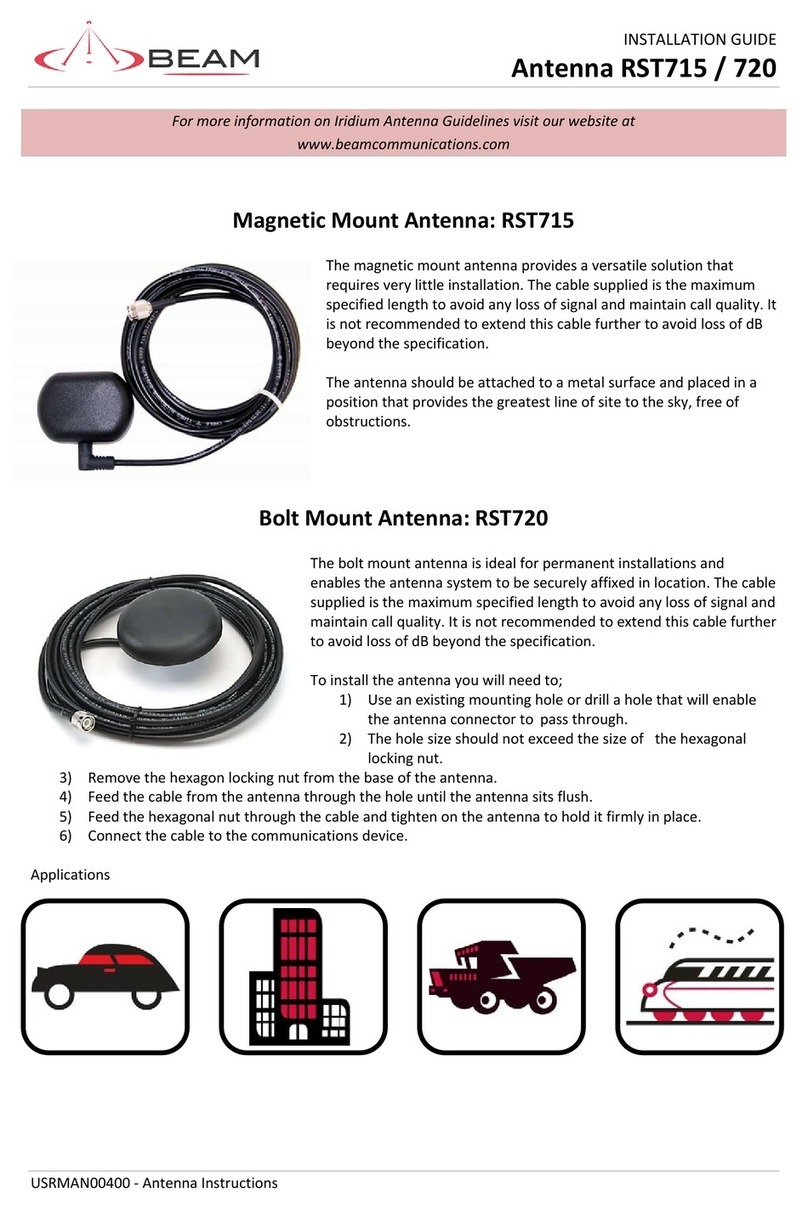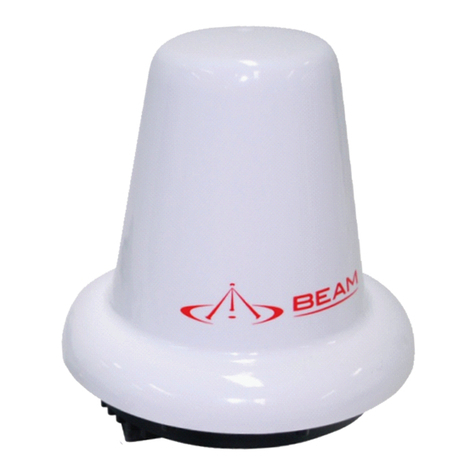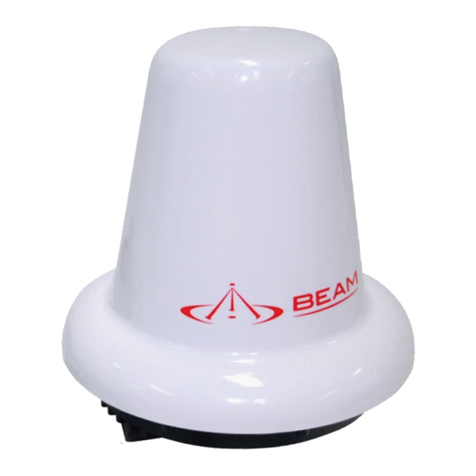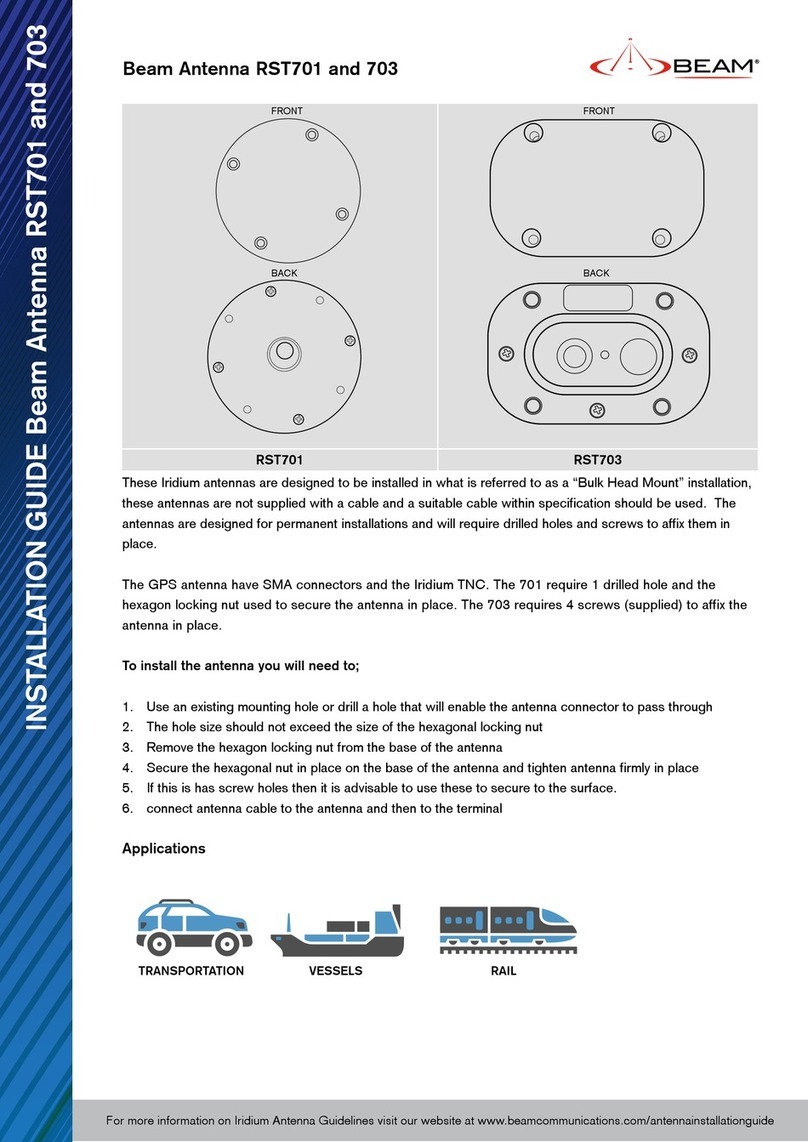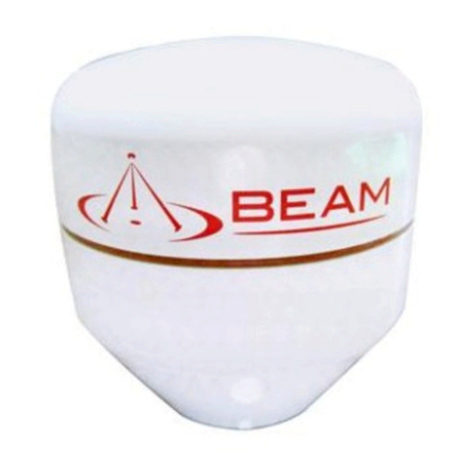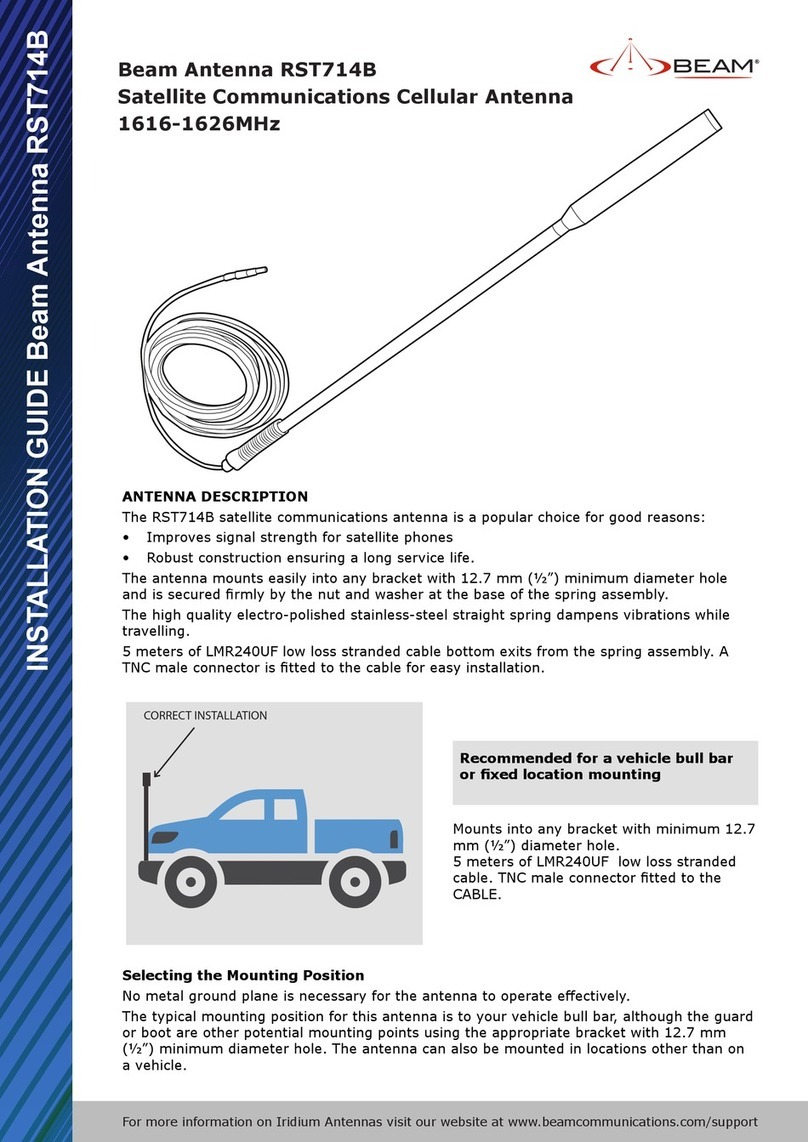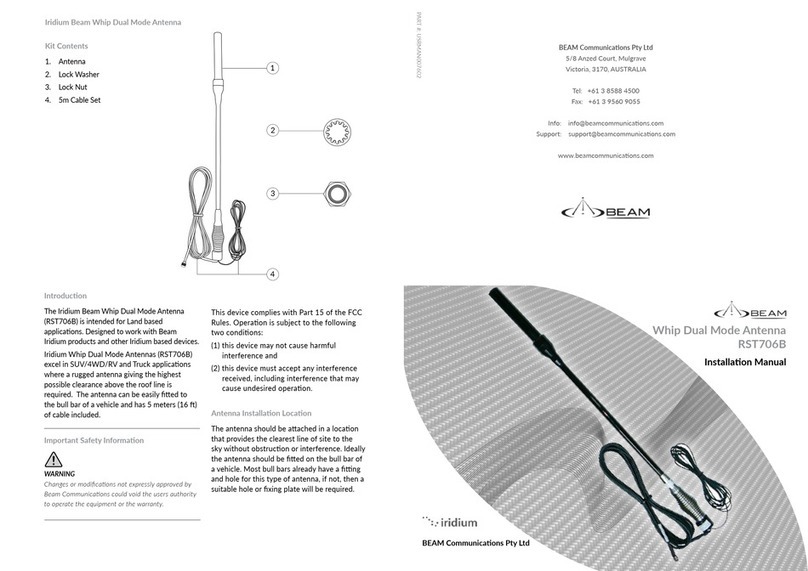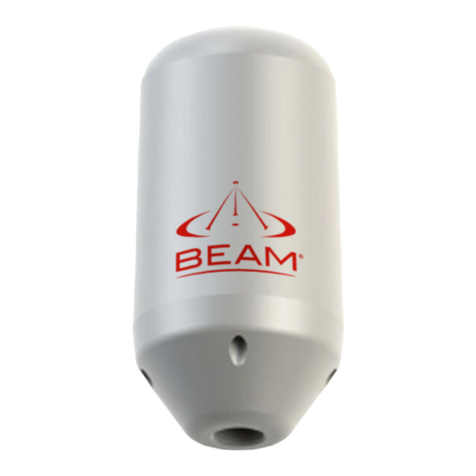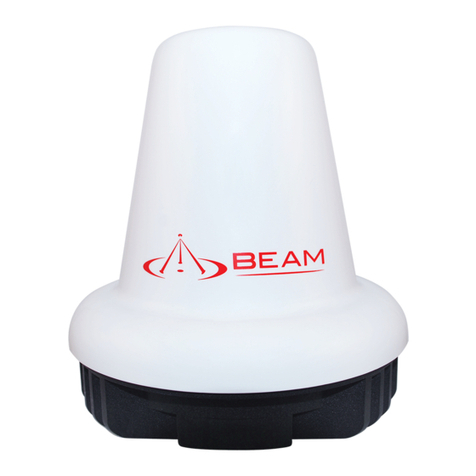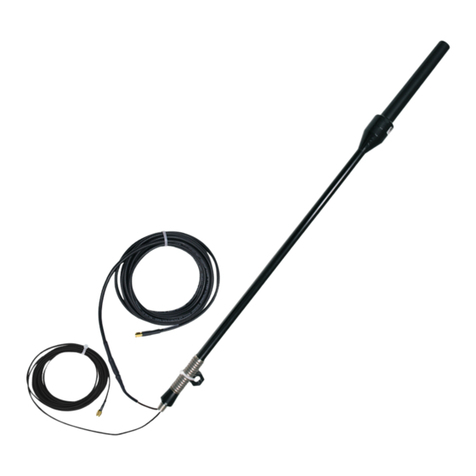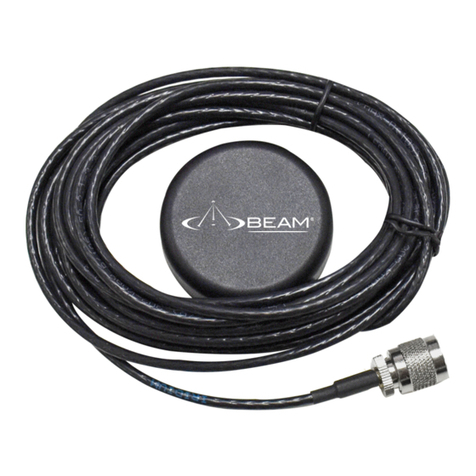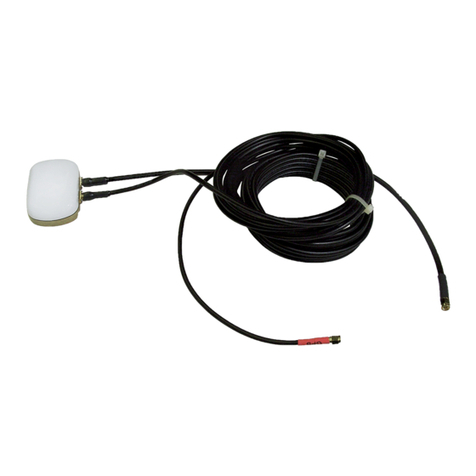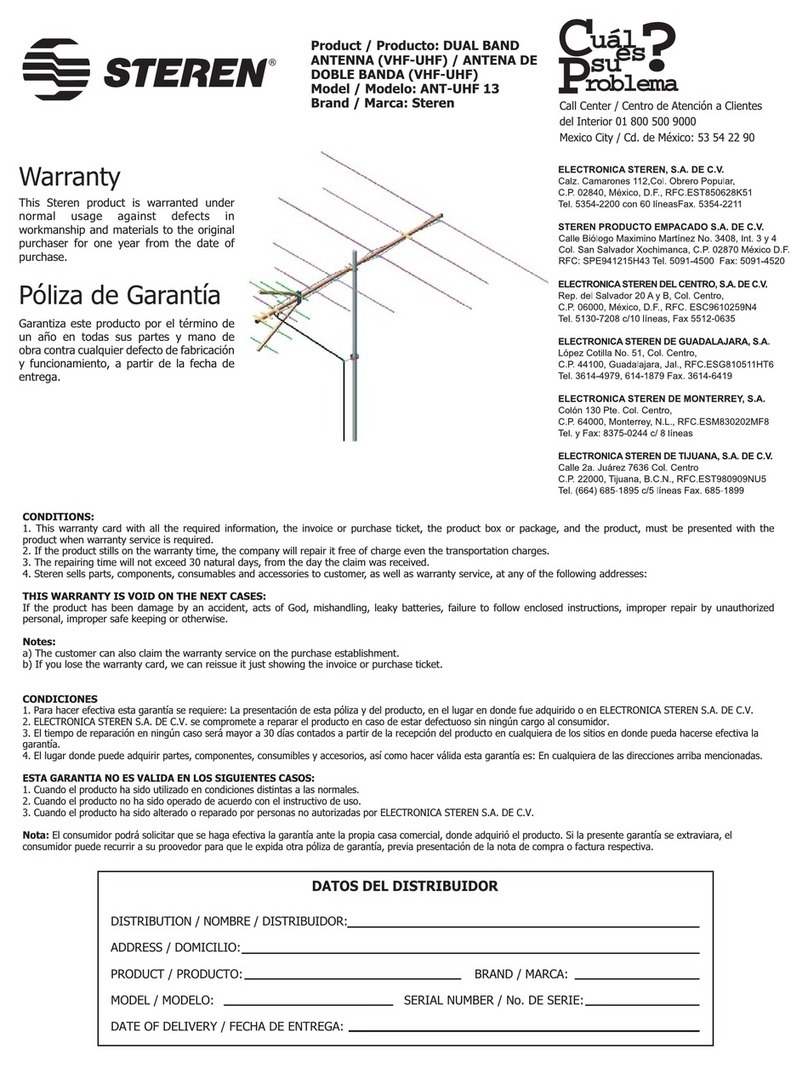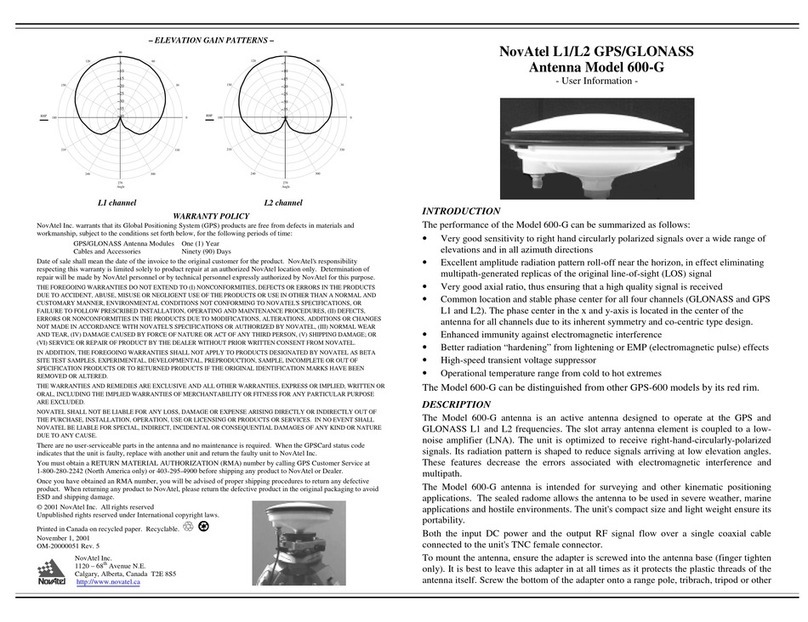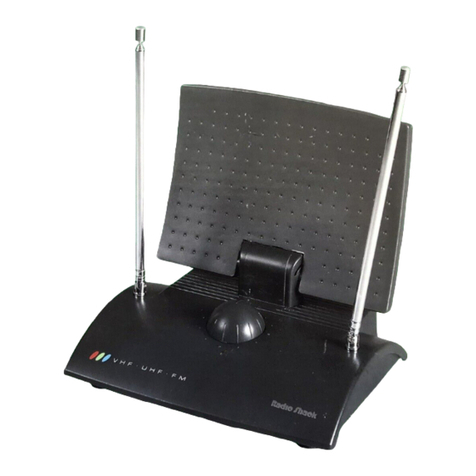Step Three:
Attach both SMA connectors
to the bottom of the antenna
making sure to connect
the GPS cable to the GPS
connector and the Inmarsat
Cable to the ISAT connector.
Step Four:
Place the antenna on top of the
mast or pole and screw in the
3 mounting screws (with a split
washer and a at washer on
each) to hold it into place.
Step One:
Antenna Cables to be brought
to top of pole or mast
Step Two:
Place pole or mast mounting
bracket over the top of the
pole or mast and fix with 3
grub screws.
Antenna Coverage
Installation Guidelines
To ensure maximum performance of the antenna system and to
maximise availability and reliability of service the antenna must;
• have a clear line of site to the sky
• be clear and free of obstructions
• be clear of metal objects
• be located away from other transmitting devices
• be securely axed in location
• not be located indoors
• be installed in conjunction with a certied cable
Installing Antenna Cables
When installing antenna cables, follow these guidelines:
• Route and restrain cables to prevent them from vibrating
or moving under normal conditions, which could result in
damage to the antenna or the coaxial cable connections.
• Wherever the cables contact structures, protect the
cables from chang or abrasion. If a cable needs to be
bent, avoid kinking it, and ensure that each bend radius
follows the cable supplier limits.
• Use coaxial sealant, shrink‐wrap tubing, electrical tape,
or another suitable product to seal all cable connections
appropriately to prevent moisture and corrosion damage
from weather exposure.
• Mount all antennas vertically and clear of nearby metal
obstructions.
• Minimize horizontal obstructions as much as possible
because they can create areas of poor system coverage.
Installation Options
The antenna system is suitable for marine, vehicle and
xed applications and is designed to meet Inmarsat System
performance requirements when installed according to the
instructions in this guide.
The following gure shows typical Installations:
The antenna must be installed without obstruction of other
instruments or structures. The antenna must not be positioned
within range of radar equipment or other RF interference.
I-4 Americas I-4 EMEA I-4 Asia-Pacic
WARNING
To satisfy FCC RF exposure requirements for mobile transmitting devices, a separation distance of 55 cm or
more should be maintained between the antenna of this device and persons during device operation. To
ensure compliance, operations at closer than this distance is not recommended.
WARNING
Galvanic Corrosion Protection
This antenna has a base and pipe adapter is constructed out of aluminum. When the antenna is mounted to a steel mast or
metallic bracket, a galvanic reaction can occur resulting in aluminum corrosion. To minimize corrosion the following steps
can be taken:
• apply self-fusing silicone tape to all connectors
• use a UV-resistant, non metallic mast when possible
• apply silicone grease or joint compound do all metallic surfaces that make contact with the antenna or mounting
adapter
• if possible use an insulating plastic or rubber sleeve between a steel mast and the aluminum adapter.
Sourced from Inmarsat
NOTE:For Satellite & GPS connection instructions please consult your Beam Inmarsat Product manual.
WARNING: Do not place the antenna anywhere there is a source of heat or fumes such as the ship’s exhaust.
Connects to IsatDock Connects to IsatDock
Connects to IsatDock
Connects to IsatDock
Maritime Antenna Installation Guide






